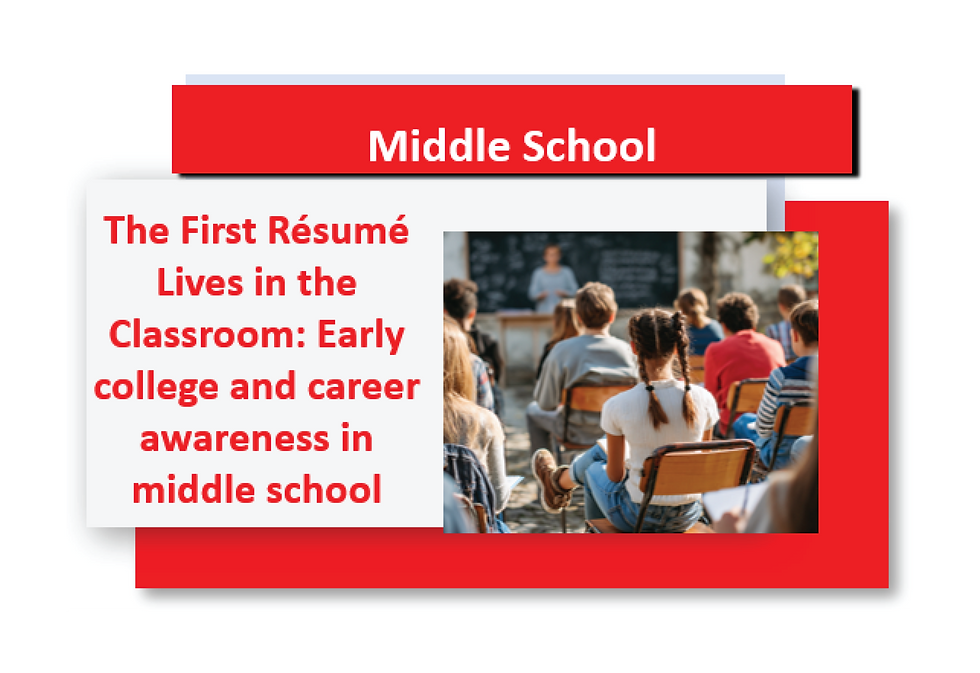Your Online Self Is a Transcript Too: Digital identity and reputation in the middle years
- andrean48
- Sep 17
- 2 min read
Updated: Sep 22
Digital Identity in Middle School.
Adolescents grow up in public. Group chats, posts, and screenshots create an audience that shifts by the hour. The result is a constant test of judgment. What you share says who you are, not only to friends, but to coaches, mentors, and future gatekeepers. That can feel unfair. It is also real. The good news is that reputation is not fixed. It is a set of choices you can learn to make.
Three parts of a digital reputation
Content. The words and images you share or amplify
Context. The timing, audience, and purpose behind a message
Conduct. How you speak to people when there is tension or when you are wrong
Students often focus on content and forget the other two. A funny comment in one context can be cruel in another. A private note can be fine. A public post can be reckless. Conduct is the piece that rebuilds trust when a message lands badly.
Why is middle school the turning point
Attention to peers peaks, speed goes up, and the line between online and in-person blurs. Choices made at night arrive in the first period. A healthy culture does not pretend phones do not exist. It treats the online world as part of the same social space where trust is built and kept.
Pause, perspective, and proof
Three habits change outcomes more than any filter or setting.
Pause. Draft it. Wait a moment. Read it as if a coach or future manager will see it
Perspective. Hand your draft to a partner and ask them to read it as the recipient
Proof. Keep a small file of positive posts that show helpful work, not just opinions or jokes
These are not scripts. They are brakes, mirrors, and receipts. They slow the moment, show how a message will land, and give evidence of who you are over time.
Repair as a strength, not a weakness
Everyone misreads tone. Everyone overreacts. The difference between a spiral and a recovery is how you repair. A good repair note has impact, states a fix, and names how you will prevent a repeat. Students who learn this in middle school do better in teams, in activities, and at work because they are not afraid of the moment after a mistake.
Belonging and protection
A strong digital culture protects the vulnerable and calls people in rather than calling them out. That looks like private check-ins, not public pile-ons. It looks like moving sensitive talk to the right channel. It appears to be refusing to forward screenshots that could harm someone for sport. Belonging grows when people know others will choose care over exposure.
The behavior you can measure
When students view online choices as part of their character, schools see fewer conflicts spill into the classroom, faster repairs when they do, and more examples of students using their voice to help. The hallways feel calmer because the group chat is less explosive. That calm is not luck. It is the product of practiced habits.




Comments